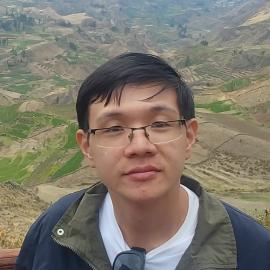Event Details:

Speakers
Gustavo Chau Loo Kung: "Magnetic Resonance Imaging of Absence Epileptogenesis"
Stephan Eismann: "Geometric deep learning of RNA structure"

Magnetic Resonance Imaging of Absence Epileptogenesis
Gustavo Chau Loo Kung
PhD candidate (McNab Lab), MBCT Trainee
Abstract
Maladaptive myelination may be related to the increasing frequency of absence seizures. To explore this connection, we performed MRI microstructural measurements in ex vivo mouse brains from the Scn8amed+/- model of absence epilepsy in two cohorts of mice at two points of their development, both before and after seizures were well established. Our MRI g-ratio results strongly agree with our previous findings based on electron microscopy and show a clear alteration of myelination throughout the anterior portion of the corpus callosum.
Related Papers
Efficient Projection onto the $\ell_{\infty,1}$ Mixed-Norm Ball Using a Newton Root Search Method
A Locally Adaptive Phase Aberration Correction (LAPAC) Method for Synthetic Aperture Sequences

Geometric deep learning of RNA structure
Stephan Eismann
PhD candidate (Dror Lab), MBCT Trainee
Abstract
Predicting the structure of macromolecules and macromolecular complexes is a grand challenge in biochemistry, with major implications for basic science and drug discovery. Computational methods for structure prediction generally leverage predefined structural features to distinguish accurate structural models from less accurate ones. This raises the question of whether a method that has full access to the three-dimensional (3D) coordinates of each atom can yield improved results. In this talk, I will present a machine learning method that learns to identify accurate models of RNA molecules directly from 3D atomic coordinates, leveraging underlying physical symmetries in lieu of hand-crafted features. The neural network architecture combines multiple ingredients that together enable end-to-end learning from molecular structures containing tens of thousands of atoms: a point based representation of atoms, equivariance with respect to rotation and translation, local convolutions, and hierarchical subsampling operations.
Related Papers
Hierarchical, rotation-equivariant neural networks to select structural models of protein complexes
Geometric deep learning of RNA structure